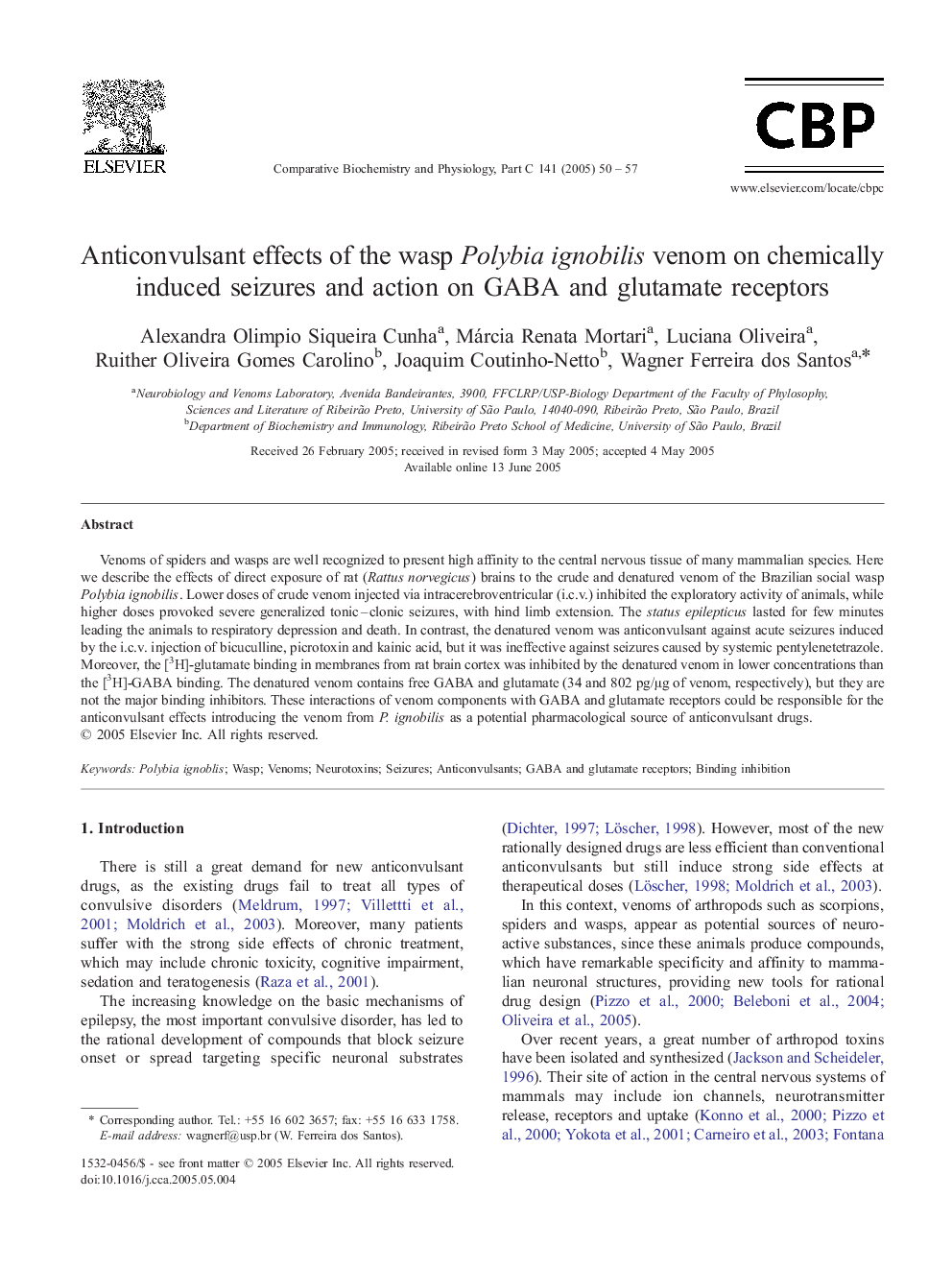| Article ID | Journal | Published Year | Pages | File Type |
|---|---|---|---|---|
| 10821955 | Comparative Biochemistry and Physiology Part C: Toxicology & Pharmacology | 2005 | 8 Pages |
Abstract
Venoms of spiders and wasps are well recognized to present high affinity to the central nervous tissue of many mammalian species. Here we describe the effects of direct exposure of rat (Rattus norvegicus) brains to the crude and denatured venom of the Brazilian social wasp Polybia ignobilis. Lower doses of crude venom injected via intracerebroventricular (i.c.v.) inhibited the exploratory activity of animals, while higher doses provoked severe generalized tonic-clonic seizures, with hind limb extension. The status epilepticus lasted for few minutes leading the animals to respiratory depression and death. In contrast, the denatured venom was anticonvulsant against acute seizures induced by the i.c.v. injection of bicuculline, picrotoxin and kainic acid, but it was ineffective against seizures caused by systemic pentylenetetrazole. Moreover, the [3H]-glutamate binding in membranes from rat brain cortex was inhibited by the denatured venom in lower concentrations than the [3H]-GABA binding. The denatured venom contains free GABA and glutamate (34 and 802 pg/μg of venom, respectively), but they are not the major binding inhibitors. These interactions of venom components with GABA and glutamate receptors could be responsible for the anticonvulsant effects introducing the venom from P. ignobilis as a potential pharmacological source of anticonvulsant drugs.
Related Topics
Life Sciences
Biochemistry, Genetics and Molecular Biology
Biochemistry
Authors
Alexandra Olimpio Siqueira Cunha, Márcia Renata Mortari, Luciana Oliveira, Ruither Oliveira Gomes Carolino, Joaquim Coutinho-Netto, Wagner Ferreira dos Santos,
